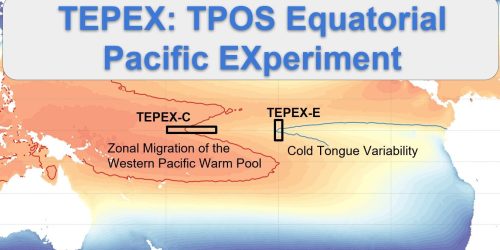A new study supported by the Climate Program Office’s Climate Variability & Predictability (CVP) Program investigates the role of ocean dynamics in shaping variations in Atlantic sea surface temperature (SST), a crucial factor influencing climate phenomena like hurricanes, droughts, and Arctic sea ice extent. Postdoctoral researcher Olivia Gozdz worked with CVP-funded researchers Martha Buckley and Timothy Delsole of George Mason University to identify SST patterns impacted by interactive ocean dynamics. CVP funded this project through three different grants focused on decadal climate variability and predictability and climate links to the Atlantic meridional overturning circulation (AMOC). The authors show that ocean dynamics like the North Atlantic Oscillation (NAO) tripole pattern and the Atlantic Multidecadal Variability (AMV) pattern play a critical role in enhancing variability, particularly in areas around the tropics.
By comparing a fully coupled atmosphere-ocean-ice model with an atmosphere-ice model coupled to a motionless slab ocean, the researchers uncover significant differences in SST variability. The study, published in the Journal of Climate, highlights the influence of one-dimensional mixed layer processes in shaping SST differences between models, emphasizing the need for comprehensive modeling approaches to isolate the contributions of three-dimensional ocean dynamics accurately. Ultimately, this research enhances our understanding of the complex interplay between ocean dynamics and atmospheric forcing in driving Atlantic SST variability, contributing to more reliable climate predictions.
For more information, contact Clara Deck.
Image credit: Pixabay










